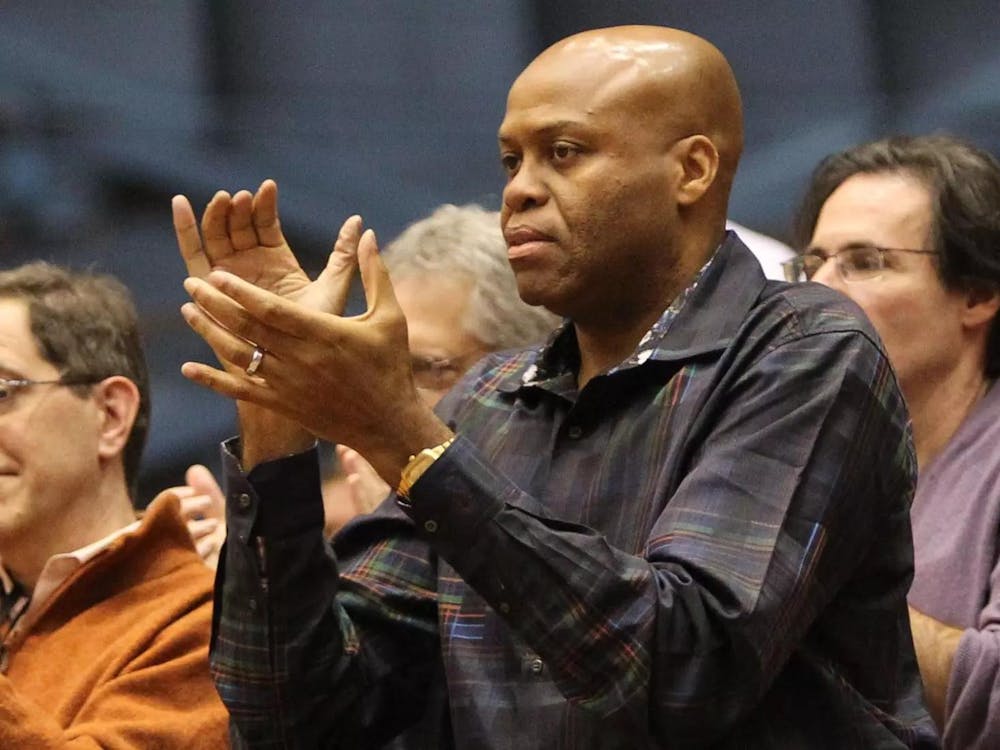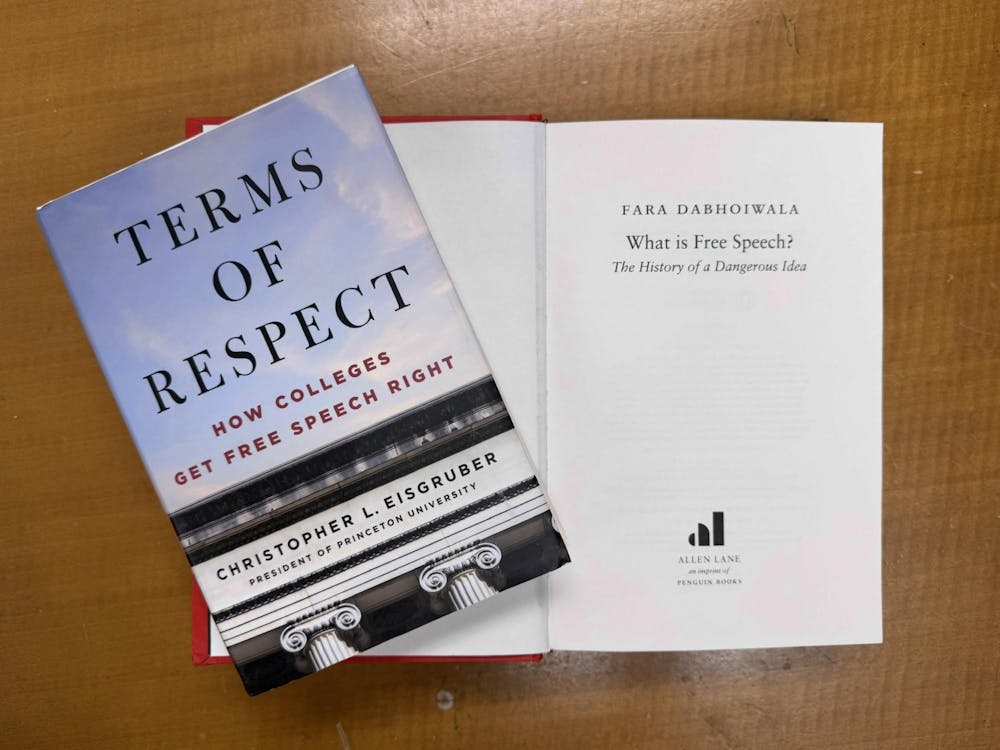The following is a column from the public editor. If you have questions or concerns regarding the paper’s coverage and standards or would like to see her cover a particular issue, please contact publiceditor[at]dailyprincetonian.com.
Content warning: This piece contains mention of suicide and sexual assault.
If I had begun this column with a joke, you would probably already have stopped reading. I am not a particularly funny person: no one’s ever hired a public editor for her humor. Lucky for us all, The Daily Princetonian employs staff who can do this much better than me. The Humor section creates content which leverages emotional responses in order to make readers laugh, contemplate campus issues, or, at the very least, open our website. However, since the section’s inception, the leaders of the ‘Prince’ have failed to treat satirical content with the unbiased and judicial eye to which all content of a newspaper should be subjected, hindering the freedom of their writers and the contributions they can make to campus dialogue.
The satire section was born out of the platform Emma Treadway ’22 submitted to the ‘Prince’ staff during her ultimately successful candidacy for 145th Editor-in-Chief (EIC) of this paper. It declares her intention to “launch a brand new section, publishing a few satirical news columns per week” to build on the former tradition of publishing a joke issue from the Daily PrincetOnion.
According to former Head Humor Editor Liana Slomka ’23, the section was renamed the Humor section under the next EIC in order to give space for the publication of pieces that did not consist of biting newsworthy satire and thus could bring more readers and writers to the paper. Whereas writing satire consists of crafting poignant or pointed pieces which draw upon comedy or absurdity to shape campus dialogue, explained Slomka, humor pieces could take forms which engaged with easier subjects with the simple goal of making people laugh, which would ultimately facilitate more productive satire pieces when they were relevant.
“I remember feeling that it was sometimes easier to crank out an easy and somewhat harmless piece even if it wasn’t particularly meaningful,” she said. “I think that’s part of the idea of encouraging writers to keep writing so that when there is a difficult subject, they feel empowered to write about it.”
Yet the culture cultivated by the leaders of the ‘Prince,’ in which the permissible topics to be used in humor are limited and removed from difficult campus dialogue, is not empowering writers to accomplish either. In conversations with former and current Humor writers, many shared the common complaint that members of Upper Management (UM) at the ‘Prince’ consistently limit the author’s freedom to choose what jokes to make and filter humorous content through an overwhelmingly progressive perspective focused on minimizing potential emotional responses to crafting an interesting point.
At the ‘Prince,’ all content goes through a production process in which it must be approved by at least two members of UM — which consists of the EIC and the managing editors — before it is published online. This includes fact checking, editing for writing clarity and concision, and ensuring that content meets editorial standards for reporting. Managing Editor Lucia Wetherill, who oversees the Humor section, explained that when UM reads a Humor piece before approving its publication, they look for a clear joke, a relevancy to campus, and a level of cleverness, wittiness, or intentionality.
“A Humor piece may not always fit my sense of humor,” Wetherill said, but emphasized that with each piece, she ponders “could it feasibly fit someone else’s sense of humor?”
However, in the process of making such determinations, UM has and continues to impose limits upon the issues and individuals writers are able to utilize in service of a joke.
When Contributing Humor Writer Sawyer Dilks drafted a historical satire piece last semester in order to “comment on the common Thanksgiving celebrations we were all taught in school” and “point out Princeton’s lack of acknowledgement of its historical treatment of Native Americans,” he said, he found that the article which was published “ended up removing the humor which actually made it effective commentary.”
Despite the fact that Dilks is of Native American ancestry and no member of UM at the time was, he noted that they edited his piece to remove its provocative nature.

“The original was definitely supposed to catch a reader off-guard by having them acknowledge the insensitive perspectives that are very present in society,” he said. “I think ultimately [it] was too much of a sock-in-the-face for UM.”
Determining what constitutes acceptable fodder for satire is no doubt a political endeavor: it involves making decisions about who can be put at unease and which issues can be leveraged to invoke an emotional response. When this is done at a managerial level, it harms the general mission of the newspaper. Non-reporting sections offer writers a unique forum for free expression and readers the chance to interact with a broad range of opinions and perspectives. Head Humor Editor Spencer Bauman noted that the ‘Prince’ leadership generally determines these standards on progressive ideals.
“The whole point of satire is to make people feel uncomfortable and to exaggerate things to the point that it feels abnormal,” he said. “But to go in the newspaper, everything has to go through that first filter of political correctness, which also has to do with the fact that a lot of people on the ‘Prince’ are interested in that sphere of campus community outside the newsroom.”
While the tendencies of the leaders of the ‘Prince’ are only representative of larger societal trends, Bauman said, the lack of effort to fight their presence serves to warp the coverage included in the paper in a distinctly political way.
“The only people that [the Humor section is] allowed to offend are the people we’re allowed to offend, like the administration or the people who the ‘Prince’ views as an other.” he said.
In my conversation with Wetherill, she emphasized that the ‘Prince’ adheres to editorial standards which require staffers to “punch up” rather than “punch down.”
“Humor by nature is a creative section, and we want to make sure that [writers] have the freedom to explore their individual voices. I don’t think that needs to be in conflict with having standards as a publication,” she said.
A core tenet of editorial integrity is considering the harm that journalism can do to its readers and wielding the power of the newspaper as a trusted source with intentionality. Oftentimes, this involves revealing critical information which might harm the few in the service of the many — doing what Wetherill called punching up by serving the communities who need institutional representation the most. The mission of humor — which is to raise emotional responses in its readers — can sometimes feel in tension with this goal. Editors are understandably loath to risk the carefully cultivated trust within their community for a single piece.
UM often appears to fail to consider that satire is, in fact, also in service of truth-telling and trust-building, which are core journalistic functions. That is, in fact, one of the purposes of having artistic and non-objective sections: offering a platform for a diverse array of authors to flex their creative muscles in interpretation of the best way to ensure their audience “come away from the ‘Prince’ more informed and better connected.” To this end, writers should be afforded the opportunity to make that decision themselves.
“I would like the liberty to make fun of everyone,” Bauman said. “How else can I write for the entire campus?”
Staff Humor Writer Michael Hwang recently published a piece on this very subject, declaring “Woke editors, stop censoring my brilliant pieces.” While he noted that the piece was not inspired by any particular incidents of censorship, he shared that UM asked him to change sample headlines of pieces that had been rejected in his fictional account.
“The joke headlines that I put there were supposed to be intentionally provocative, because the joke is that I’m complaining that I can’t publish these pieces when they’re clearly offensive to people,” he said. “So, I do think changing those joke headlines to be not provocative at all is kind of silly, because that just defeats the purpose of the joke.”
Hwang clarified that he generally appreciates UM’s sensitivity and urge to avoid angering readers. However, he explained that he disagreed with some of their philosophy on the purpose of the section.
“They don’t really make a distinction between making fun of something and just using something as a vehicle to deliver a completely different joke,” he said. “You can’t mention certain things at all, even if you’re not making fun of them.”
When asked about topics which are off-limits to humor writers, Wetherill gave the examples “sexual assault” as well as “racism” and “suicide.”
“There has been a lot of campus conversation about student death, and I do not see an appropriate avenue for that in the Humor section,” Wetherill said.
Of course, I am not suggesting that writers engage in racism or make jokes about suicide. But the attitude that discussing serious situations in ironic or satirical manners makes light of them severely limits the ideas represented in Humor coverage. Despite the fact that, as in any non-reporting section, it is the views of the writer alone represented by the piece, UM often asks writers to rewrite sections which discuss complex situations or make use of populations which may have stereotypes associated with them.
This semester, for example, a managing editor once declared that a piece in which the possibility of being found nude by fire inspectors was satirized could not use a female name for the protagonist, as women make up the majority of sexual assault victims. Such a sentiment is a disservice to the point of satire, which involves using humor and emotion to interrogate uncomfortable situations. If those situations cannot be represented, the dialogue will remain unchanged and uninterrogated.
“To make any real point, one has to use real issues, and to avoid those issues stops us from being able to combat them effectively,” Bauman said. “And we remove them from the discourse.”
Indeed, limiting those who are allowed to be involved in a joke to non-marginalized populations and unserious issues forces writers to paint the community in a homogenous and simplistic way.
Humor, as with any qualitative judgment, is subjective: it would be impossible for someone to write a compendium of what writers are and are not allowed to say. This is why it is essential for writers of artistic and non-neutral content to be given the broadest possible latitude with their speech: to do otherwise is to narrow the scope of the paper in service of a particular political ideal. If the ‘Prince’ is going to publish satire, it is imperative that it cultivate a culture which respects and uplifts humor as a creative tool. This involves encouraging writers to make informed decisions about what stereotypes, critical issues, and cultural knowledge they will leverage as they undertake work which will make readers laugh at the very least, and, at the very most, think.
Abigail Rabieh is a very serious junior in the history department from Cambridge, Mass. She is the public editor at the ‘Prince’ and writes to address issues of journalistic quality and ethics.








